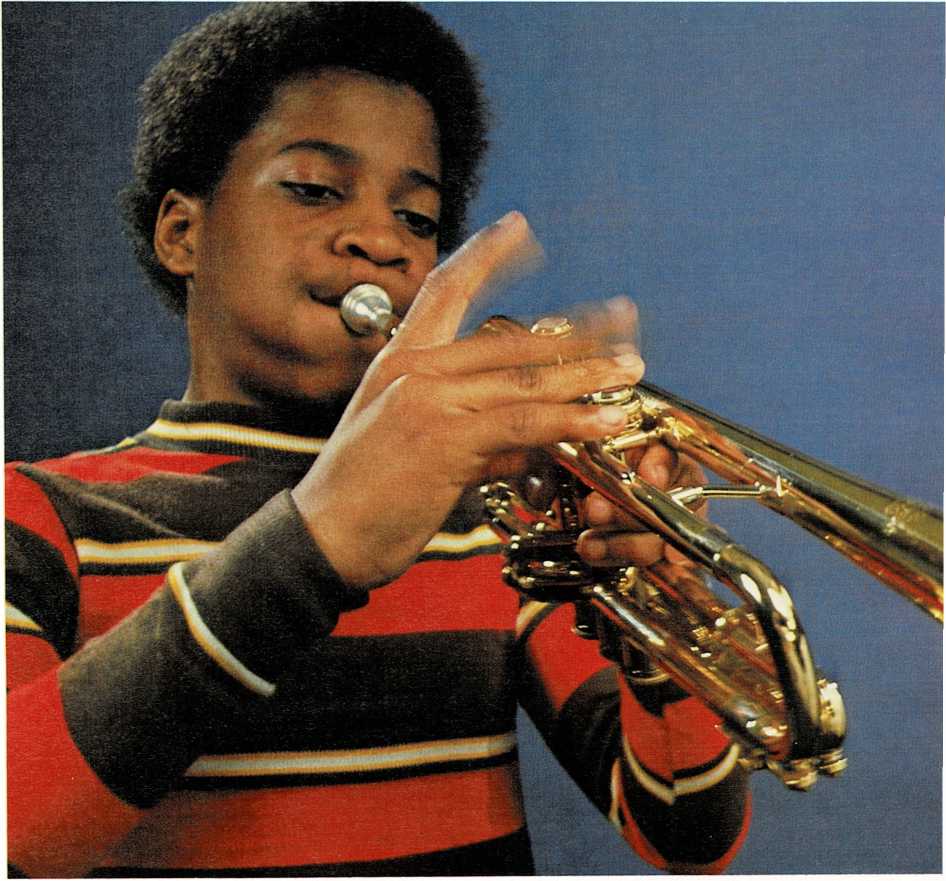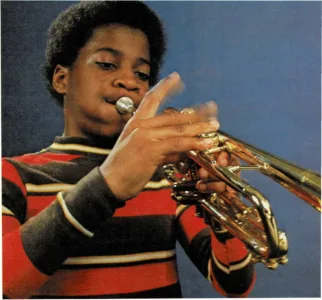Musical brass
Where does the loud, sharp sound of a trumpet come from? It all starts
with a tiny \”buzz”—a vibration very much like the one you make when
you hum.
When you play a trumpet, your lips buzz against the mouthpiece. This
starts the vibrations that make the sounds.

A trumpet belongs to the family of brass instruments. It makes music
when you blow into the mouthpiece in a special way. You tighten your
lips and make them vibrate against the cup-shaped mouthpiece as you
blow. This makes the air in the trumpet vibrate, and you hear a sound.
By changing the shape of your lips, you can make the air vibrate faster
or slower, and make a higher or lower sound.
You can also change the sound by making it travel farther. A trumpet has
several loops of tube that are closed off most of the time. Pressing a
button opens a valve, or doorway, in a loop. When vibrations travel
through one or more extra loops, they make a lower sound than if the
valves were all left closed.
The cornet (kawr [neht)]{.smallcaps} sounds very much like a trumpet.
The French horn [(frehnch hawrn)]{.smallcaps} and the tuba
[(too]{.smallcaps} buh) have longer, wider tubes. So the vibrations
traveling inside the tubes make much longer waves. These waves produce
much lower sounds.
One kind of brass instrument has no valves at all. To make high or low
notes on a slide trombone (trahm [bohn),]{.smallcaps} you actually make
the tube shorter or longer! You push or pull on a U-shaped piece of tube
that slides in and out of the trombone. The shorter you make the tube,
the shorter you make the sound wave—and the higher you make the sound
of the note you play.

